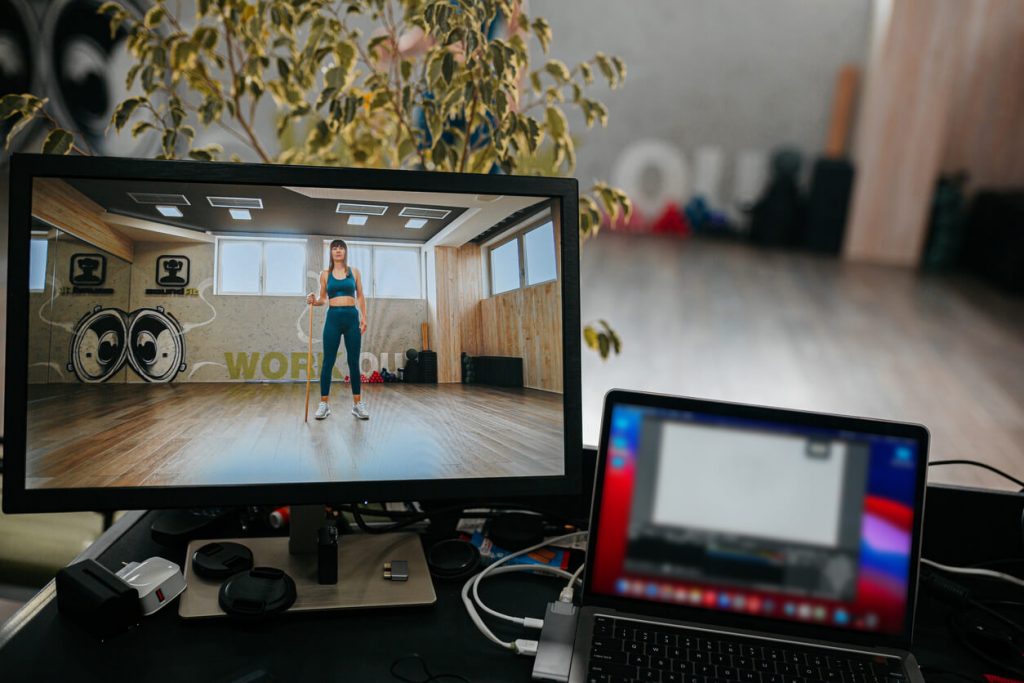As with any career, being a personal trainer comes with pros and cons. But what are they, and how much will they affect your decision when it comes to getting qualified?
Here you’ll find a full list of the advantages and disadvantages of being a personal trainer, alongside various resources to help you decide whether a career in fitness suits you.
Advantages of being a personal trainer
1. A rewarding career

One of the biggest advantages of being a personal trainer is that you can make a real impact on your clients’ lives.
The clients who sign up with you will likely struggle to achieve the goals they’ve set for themselves. Your job is to help them establish realistic, healthy goals and then knock them out of the park.
Plus, the first time you witness a noticeable difference in their self-esteem and overall confidence, you’ll see that personal training goes far beyond just helping others with their fitness goals.
You’re ultimately there to guide them on a path of self-acceptance and have a healthy mindset towards fitness and nutrition for the rest of their lives. This will give you more job satisfaction than you could have imagined!
2. Following your passion
Since you’re looking up the pros and cons of being a personal trainer, it’s safe to say that you must have a passion for fitness.
The great thing about turning this passion into a successful career is that you’ll be doing what you love daily, instead of being trapped in an environment that doesn’t motivate or excite you.
You can also combine your love of fitness with other things you’re passionate about, as you can target a range of niche fitness markets in your career.
This can improve your chances of standing out against the crowd and increase job satisfaction by helping those whose needs are sometimes overlooked by trainers.
A great example of a PT targeting a niche market is LGBTQ+ personal trainer Lida Ksenija, who trains those looking for a PT who understands the difficulties of being a queer person.
3. Very social

Are you someone who thrives in roles that require you to work alongside others?
If so, you’ll be glad to know that personal training constantly requires you to be on your feet, working with colleagues or clients. No more sitting at a desk and staring at screens all day!
Personal training is one of the most social careers out there, as one of the main roles and responsibilities of a personal trainer is to communicate effectively.
Whether you’re working one-to-one with a client, running a boot camp session, or talking with other professionals at a networking event, you’ll constantly have the chance to form and build relationships with others.
4. Freedom and flexibility
When it comes to the pros and cons of being a personal trainer, flexible working hours are one of the main reasons people transition onto this career path.
It’s ideal for those looking to avoid the typical 9-5 workday. If you become a freelance PT, you can effectively start and finish your day whenever you like, especially since many clients prefer to train before or after work or on weekends.
Aside from your schedule, it’s also flexible in terms of the role you undertake. No two days are the same, and the role is incredibly varied. You could be working with a client that is new to fitness in one hour and training a professional athlete the next!
You can become a specialist in an area of fitness that takes your interest, such as:
- Obesity & Weight Management Control
- Diabetes Management Control
- Lower Back Pain Management
Becoming a go-to expert can help you gain and retain more personal training clients by providing a better service and having the edge over your competitors.
5. Huge earning potential

One of the biggest advantages of being a personal trainer is the uncapped earning potential.
While job satisfaction is arguably more important, your salary is still an important factor to consider. After all, the main reason you go to work is to earn money.
Not all personal trainers are making a killing, but that’s largely due to a lack of marketing knowledge. With the right tools, you can easily earn upwards of £50,000, and that’s without running an online personal training business!
Say you charge £35 per hour, and you schedule 30 hour-long sessions each week.
Before-tax that works out at:
- £1050 per week
- £4200 per month
- £50,400 per year
This rate can dramatically change if a few factors are tweaked, such as the location of your business and your target client base.
If you run a successful online PT business alongside in-person coaching, you can earn unlimited money.
Related: What Is A Typical Personal Trainer Salary in 2022?
6. Multiple working environments
If you’re relatively new to the world of fitness, you may believe that the gym is the only place you’ll be able to work.
The truth is there is a range of environments that you can work within as a personal trainer. This is great news if you don’t see yourself working at your local gym or decide you need a change every couple of years.
PT workplaces include:
- Health clubs
- Leisure centres
- Hotels
- Spas
- Holiday resorts
- Cruise ships
- Corporate settings
- The Armed Forces
As you can see, the choices are endless. If you decide to become a freelance or self-employed trainer, you can work across multiple environments and make your role as varied as you wish. And you can explore fitness instructor opportunities online to find one that looks appealing to you.
7. Unlimited progression

With the rise of celebrity personal trainers and fitness influencers, the sky is the limit when it comes to how far you can progress as a fitness professional.
Just look at Joe Wicks. He started as a regular PT in South London and now owns his own global business, The Body Coach.
Not everyone wants to be a celebrity, and that’s fine! But it’s great to know that success is uncapped in this industry, and if you choose to gain experience and become a go-to expert in a certain field, it’s not too difficult.
All you need is to undertake some additional fitness qualifications or conduct personal research in a certain field (like James Smith did with women’s menstrual cycles). If you build on your knowledge and have a genuine desire to help people, the world is your oyster!
Related: How To Be A Successful Online Personal Trainer
Disadvantages of being a personal trainer
1. Long hours

One thing to consider when you’re just starting at a PT is that you’ll have to work during unsociable hours.
Before you build up a significant client base, you could find yourself having to build your schedule around clients and when they want to train, especially since many of them will work 9-5.
You could find yourself working from 6-7 am until late evening, with a break in the middle of the day rather than an evening at home.
However, once you’ve built up a stable client base and become more established as a personal trainer, you’ll have a greater say in your schedule.
The more sought-after your services become, the easier it is to fill your schedule with clients that can train during typical working hours if that’s what you prefer.
You’ll also be able to charge more for your services, train fewer clients and ultimately have more free time. This is one of the advantages of being a personal trainer with more experience!
2. Unstable income
When discussing being a personal trainer, the pros and cons often interlink.
Income is undoubtedly one of the biggest advantages to this career path, but only the personal trainers willing to put in the work when they start will get past this first hurdle.
Our biggest advice to newly qualified trainers is to work in a gym first and then move into freelance or self-employed training once you’ve built up a client base and have some experience under your belt.
That way, you have a guaranteed income while you’re getting your foot on the ladder and can later benefit from the uncapped earning potential of working for yourself.
Unstable income can still affect trainers earning top figures due to client cancellations. But the best way to avoid this is to create a cancellation policy so you don’t miss out on income if clients cancel before you can replace their session.
Related: A PTs Guide To Building A Client Base From Scratch
3. Risk of injury

Demonstrating exercises throughout the day comes with a fair amount of risk, especially since it physically takes its toll on you.
This is even more likely if you run boot camp sessions, where you’re practically completing the entire workout alongside your clients.
You can check out our article on common injury claims made by personal trainers to learn more.
The best way to avoid this becoming an issue is to get covered through specialist personal trainer insurance. That way, your earnings are protected if you become injured and unable to work.
Related: What Insurance Do Personal Trainers Need In 2022?
4. Difficult clients
As with any public-facing role, you may encounter clients who are hard to deal with during your career.
Most clients will be grateful for your help and engaged with what you teach them. After all, they’re paying for your services and should want to take advantage of the specialist advice you’re offering.
There will be times when clients won’t follow the advice you give to them, or worse—they’ll lie instead of being transparent when they deviate from their workout or eating plans.
In this situation, the best thing to do is to learn from the experience and always be open to adjusting your client’s plan if it isn’t working for them.
Specialist personal trainer insurance from Insure4Sport
If you’re qualifying as a personal trainer this year, make sure you protect yourself through insurance before you start building your client base.
At Insure4Sport, our specialist personal trainer insurance is designed for all fitness professionals. Whether you’re a gym instructor, freelance trainer or you’re setting up an online personal training business, we’ve got you covered.
Click the button below to learn more about how our specialist insurance can help you and get an instant online quote.






